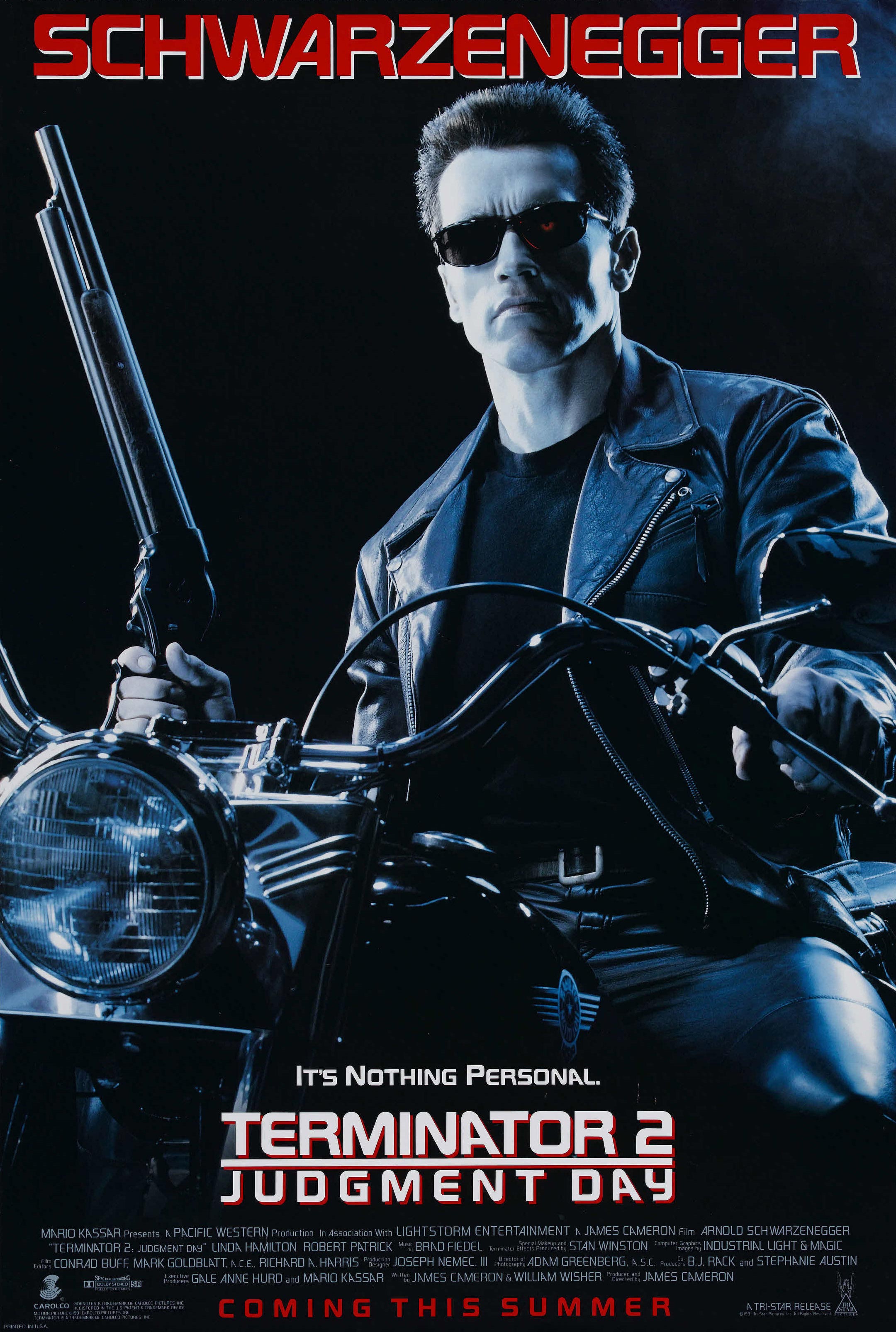
The T-800 comes of age as James Cameron flips the script with an action sequel for the ages
In creative terms, the hardest movie to make is a sequel. If a sequel has been put into production it’s because its predecessor struck a note with the theatre-going public, which is typically an indication that the movie was good, perhaps even great. A sequel also brings a lot of expectation, though audiences have learnt to expect the worst. Due to the evolving marketing machine and the prerequisite franchise studios crave, many grew sceptical as to what those sequels may have in store. In recent times, this has become even more apparent thanks to the modern studio’s obsession with franchise reboots, a cynical exercise whose main goal is to slash marketing expenditure based on our existing love for those movies. But numbered sequels go all the way back to the early 1970s, and by the late-1980s audiences had already grown tired of half-assed productions sold off the back of superior instalments.
In 1984, James Cameron’s The Terminator introduced us to arguably the greatest and most influential sci-fi character of the decade. So popular was the filmmaker’s low-budget revelation that it spawned a whole host of inferior knock-offs that ranged from mind-numbingly average to charmingly absurd, but one thing was clear: such a movie could never be replicated. Arnold Schwarzenegger‘s Cyberdyne Systems Model 101 Series T-800 Terminator was an indestructible monster with an unwavering objective to kill, a wonder of robotics design that wowed audiences as much as the man mountain who portrayed its superficial form. The T-800 could not be bargained with, could not be reasoned with, and it was this absence of empathy which made the character more terrifying than any organic killer, however bloodthirsty or deranged their disposition.
The key to a quality sequel is that it brings something fresh to the fold while maintaining those winning elements that endeared us to the original, and in those terms there are few better than Terminator 2: Judgement Day. I’m not referring to the 1993 Special Edition with an additional 17 minutes that featured a returning Michael Biehn, which for me tarnishes arguably the film’s greatest strength: it’s breakneck pacing. I instead mean the balls-to-the-wall theatrical cut, a monument to action moviemaking that broke all kinds of box office records, becoming the highest grossing movie of 1991 domestically ($205,881,154). Terminator 2 wasn’t just a movie, it was a cultural happening that defined a generation. Not only was it the most expensive movie to date, it was the commercial peak of one of cinema’s most recognisable stars, the film exceeding all expectation with an eye-watering worldwide gross of $520,881,154.

With such financial muscle and the biggest movie star on the planet manning the rig, you’d expect nothing less, but it’s never that straightforward. You only have to look at 1995’s Waterworld to see how ugly things can turn on an unprecedented budget. Waterworld wasn’t a lazy re-hash per se, but inevitable comparisons with Mad Max 2: The Road Warrior, a similar and far superior dystopian vehicle that cost a mere fraction of what was also the most expensive film ever made, proved the death knell. Sequels are a much easier sell for the most part, but moviegoers don’t appreciate feeling cheated. In 2013, the totally unnecessary fifth Die Hard sequel, A Good Day to Die Hard, grossed a wholly undeserving $304,700,000 worldwide. Great news for 20th Century Fox, but fans of the McClane saga, who now disregard a movie that doesn’t even feel like it belongs to the series, were in uproar. Good luck selling the long-mooted ‘Die Hard 6’.
Come with me if you want to live!
T-800
The fact is, it’s easy to go through the motions and produce a needless re-tread or lazy re-tweak of an established property with so much money at stake, and because that established property has already guaranteed butts in seats, an adequate job is generally enough to please the studios, whose prioritising of money over material probably has them pushing for more of the same. The difficulty with Terminator 2 was that Arnie was perfect for the role that would transform him into a mainstream icon, making a rehash almost inevitable. His suitably wooden demeanour portrayed the original T-800 with such natural detachment that you simply couldn’t imagine anyone else in the role. Put succinctly, Arnie WAS the Terminator; without him there was no sequel.
There was another stumbling block. By 1991, Arnie was an established ‘good guy’ who was only accepting good guy roles as he looked to further ingratiate himself with political circles. The future Governor of California, a staunch right-winger dubbed ‘Conan the Republican’, had married JFK niece Maria Shiver in 1986, and had not played a bad guy since. In fact, sympathetic Batman villain Mr. Freeze notwithstanding, he would never play a bad guy again owing to ambitions outside of Hollywood. With 1988’s Twins and 1991’s Kindergarten Cop, Arnie would veer away from the action genre almost entirely, choosing comedies that further bolstered his amiable public image. In 1994, he would play the world’s first pregnant man in Junior, a film that promoted gender equality and notions of liberalism in the most absurd fashion. By 1991, there was no way Arnie could return to the role of a coldblooded killing machine, however extraordinary the paycheque.
Inevitably, Arnie did return to the role, but thanks to a deft slight of hand from Cameron, his character evolved in a way that nobody had expected, presenting us with a heroic variation of the T-800 with the capacity to learn and empathise. The original machine, sent back in time to kill the unborn leader of the resistance and destroy humanity, was very much in the popular stalk and slash mode, a colossal monster who put the majority of horror villains to shame, but with Terminator 2 all of that changed. 1991’s Arnie was a noticeably slimmer, less fearsome prospect. He was still an awesome presence, but he wasn’t quite the swelled behemoth who’d left such an indelible mark on 80s Los Angeles. It made sense. Steroids were a hot and sensitive topic in 1991, Vince McMahon’s World Wrestling Federation embroiled in a high-profile lawsuit involving the abuse and distribution of the now criminalized drug, one that threatened serious jail time for one of America’s most high-profile businessmen. It also made sense narratively speaking, especially considering the relatively slight frame of the T-800s equally revolutionary nemesis, the positively disconcerting T-1000, an advanced machine that not only put Arnie’s character in the shadows in terms of technological capacity, but also presented him as a traditional beast with traditional values, valuable characteristics for a conservative with political aspirations. The idea was to bring a level of humanity to the reprogrammed T-800, an inkling of fallibility, the kind that was alien to the original T-800.
The character’s iconic reintroduction sets the tone beautifully. When the reprogrammed T-800 strolls into a biker bar in his birthday suit we still presume he’s the same coldblooded killer from the first movie, and technically he is at this point, it’s just his directive that has changed. When the T-800 coldly demands the gang leader’s clothes, boots and motorcycle, the odds are quickly stacked against him. Here, Cameron uses our existing knowledge to put us firmly on the side of a character who we still presume is the villain. As insiders who know what the other characters don’t, gaining great satisfaction from the notion that this otherwise fearsome rabble are messing with the wrong dude. The original movie occasionally used the character’s intimidating presence to raise a smile ― the “Get out!” moment with the stunned trucker and the hotel dweller who takes a step back and lets out a totally relatable daaaayyyyuuuumm!” ― but everything about the character suddenly screams antihero. This is the same machine who unflinchingly ripped out a man’s heart at the beginning of The Terminator, making short, remorseless work out of anyone unfortunate enough to delay his objective, but when the bar owner aims a shotgun at the T-800 as he attempts to leave on a customer’s bike and has the weapon quickly snatched away, Arnie spares the man’s life and reaches for his sunglasses before making an abrupt, distinctly antihero departure. Bad to the bone indeed!

In Terminator 2, Arnie’s T-800 is a very different entity; an irresistible force sent to protect humanity rather than destroy it. The movie still follows the same seek-and-destroy formula, our protagonists running a breathless gauntlet while being pursued by a seemingly indestructible villain, but an ingenious role reversal breathes new life into an already established concept. First and foremost, Arnie’s newest incarnation is that of a surrogate father for the young John Connor, a juvenile delinquent who views his mother as a whack job until the subject of her so-called delusions shows up in time to save him from the cybernetic model that will one day make his counterpart obsolete. Connor is the precocious rapscallion who loosens his protector’s unyielding pragmatism, a fact beautifully punctuated by the boy’s attempts at helping the machine fit in and discover his human side. Those scenes are both humorous and genuinely touching, bringing a sense of levity to a nihilistic concept that points to a very possible future, one in which technology overcomes and outlives its creators.
Arnie had grown so much as an actor in the seven years since the original movie’s release, refining his inimitable brand of humour to exquisite levels thanks to a series of blockbuster movies that identified and exploited it, and there are so many wonderful moments shared by the T-800’s second incarnation and the youngster he is sent to protect. John may have war in his blood, a fact cutely highlighted by his choice of arcade games (he is seen playing Asteroids and After Burner at the galleria), but he’s still a kid at heart, and he immediately reacts like one after an incredible high-speed chase involving himself, the relentless T-1000 and Arnie’s gun flipping warrior, who proves just as ceaseless and resourceful as his souped-up pursuer. That reload action blew my mind as a watching 10-year-old, just one of many flourishes that made Terminator 2 the most complete action movie up to that point, and possibly to date.
John quickly realises that in the T-800 he has the kind of protector who’ll do anything he says, who makes him feel invincible for the first time in his life, and naturally he sets out to exploit that fact. Physically, the T-800 is the paternal figure who’s been absent from John’s life, but emotionally there’s still much work to be done. The reprogrammed T-800 is still a machine with an objective, childlike in its understanding of humankind and unable to see the potential consequences of his actions. There’s a little of that in John, too. This is a kid who’s been passed from foster home to foster home, an emotional refugee who’s never had a voice or someone to share it with. When it finally registers that he has an indestructible killing machine at his disposal, he flaunts it the way any kid would, immediately setting his new dog on a pair of musclebound douchebags who almost become yesterday’s news. Lesson learned.
Like any child immune to adult conditioning, there are some objectives that John is intent on fulfilling, regardless of their importance to the overall mission, and his loyal protector has no choice but to acquiesce. The T-800 isn’t the only character from Terminator 2 who is unrecognisable from the first movie. By this point, Sarah Connor has also been reprogrammed thanks to the kind of life-changing events that have estranged her from her son and everyday life as we know it. 1991’s Sarah Connor is the complete antithesis of the wholly unprepared waitress with the mainstream perm and moped who awoke in 1984 to realise that the future of mankind was utterly dependent on her actions. She’s learnt a thing or two since then. She’s opened eyes, trained with warriors, and the powers that be consider her a huge threat to society, an irony that burns deep inside of her.
Watching John with the machine, it was suddenly so clear. The terminator would never stop. It would never leave him. It would never hurt him, never shout at him, or get drunk and hit him, or say it was too busy to spend time with him. It would always be there. And it would die, to protect him. Of all the would-be fathers who came and went over the years, this thing, this machine, was the only one who measured up. In an insane world, it was the sanest choice.
Sarah Connor
Sarah is also as smart as a whip, able to curb her rage when necessary but a seething maelstrom whenever something stands in her way. Unfortunately, the wonderfully supercilious Dr. Silberman (Earl Boen), fascinated by the uncanny detail of Connor’s wild forewarnings, thinks he has her pegged, which means his favourite patient is going nowhere, but when she receives news of the original T-800’s return following a beautifully orchestrated showdown at the galleria, she realises John is in trouble and all bets are off. Sarah may be in a seemingly hopeless predicament, but she’s well-schooled in nihilism, her sculpted body symbolic of an unwavering passion to achieve the unimaginable. As tough as she is, when Arnie’s T-800 shows up to seemingly foil an otherwise successful escape attempt, Connor collapses in sheer terror. She may be fearless when it comes to her own kind but the scars of 1984 run deep. Of course, there’s something she doesn’t know yet, and we the audience can’t wait to tell her what that something is.

Much like Ripley in Cameron’s Aliens, the original movie’s Mary Magdeline has grown even stronger in our absence, though she’s done so from behind bars, her torrid tales of nuclear holocaust confining her to the loony bin for much of her young adulthood. When we first meet Sarah, she is gawked at like a circus freak by prudish pencil pushers and marvelled at by Silberman, a bureaucratic cog who on some level seems to need Sarah like The Joker needs Batman. Our first glimpse at his most cherished patient reveals an astonishing physical transformation. Sarah is no longer a bottom-rung citizen sleepwalking through life. She’s a hyper-trained rake of muscle and sinew, fetishized the way her unlikely ally has been countless times in the past. In her quest to save the human race, all notions of humanity seem to have vanished, Sarah becoming more machine than man, a fact punctuated in a scene in which she deviates from the plan entirely, attempting to assassinate the inventor of a revolutionary microprocessor that will ultimately result in the destruction of mankind. In doing so, Sarah reveals her capacity for remorselessness, and though John is able to talk her back from the brink, she’ll need to call on those characteristics if she has any chance of surviving a much more immediate threat, and what a threat!
It was through the addition of a rival Terminator, a concept that was supposed to be applied to the first movie until a lack of existing technology intervened, that Cameron was able to freshen the Terminator formula without truly deviating from it — something later sequels would do to their detriment. The manhunt concept was key to the success of the original movie, and casting Robert Patrick as the shape-shifting assassin sent back in time to eliminate a teenage John is the director’s second stroke of genius. The T-1000 is a prototype model made from mimetic polyalloy, a ‘nanomorph’ who is able to visually mimic the molecular structure of any living being, as well as transforming its body into lethal, non-complex weapons. While the T-800 is able to register pain and can deteriorate if subjected to enough firepower, his advanced opponent is nigh-on indestructible, his wounds closing immediately and causing no lasting harm. The fact that Patrick has a much smaller frame than his adversary makes him even more unsettling. This time the odds are stacked against both the reprogrammed T-800 and the would-be-family he’s been sent to protect.
The monster Patrick, Cameron and the SFX team were able to forge was simply terrifying, an against-type revelation that would quickly enter the fabric of cinematic culture. As a kid, Arnie was my go-to star, an invincible mass of muscle who was undefeated in the realms of Hollywood, even when faced with Predator‘s eponymous super warrior, but I feared for him like never before when pitted against the astonishing T-1000, an irrepressible scourge who emerges from the blazing wreckage time and time again. For me, there’s an element of John Carpenter’s The Thing at play. Not only is Patrick’s T-1000 able to assimilate different forms, when heavily wounded it adopts the kind of abstract manifestations synonymous with Rob Bottin’s outpost parasite, a deeply inhuman capacity for mimicry that unsettles on a fundamental level. There is something so creepy and inorganic about the liquid metal scene too. When a frozen and shattered T-1000 begins to reform, it’s like a cellular disease that won’t die, that just keeps evolving, growing deadlier and more persistent. The T-1000 is unremitting death personified.

Patrick’s coldblooded performance is key to establishing our empathy for a machine who once struck fear in our hearts. The T-800’s future obsolescence makes him a somewhat tragic figure, the fact that he’s been reconfigured to learn from his human counterparts making him all the more fragile and endearing. The moment when the machine stiffly examines a baby while holding it up like a bag of oranges is absolutely priceless, but also meaningful, as are those scenes when the T-800 gets a crash course in modern profanity, the actor’s delivery of lines like “Chill out, dickwad,” a joy to behold, not only as straight-up comedy, but as an ingenious relationship-building device. Judgement Day‘s greatest charm lies in the evolving relationship of the T-800 and a young John Connor. In a deliciously ironic twist, it’s through the machine that a future John had sent back in time that he learns how to become the leader who future generations will depend upon. Similarly, it’s through the child that the T-800 is able to learn what it is to be human, to understand right from wrong in an environment of ceaseless and necessary violence. Without this element the movie would be nothing more than two machines knocking the shit out of each other. There would be no empathy, no sense of allegiance, no heart.
Those human traits come naturally to John, but stability is something that must be provided, and his arrives in the most unlikely form. Sporting a Public Enemy t-shirt and zipping from crime-to- crime on his dirt bike, John already possesses the kind of resourcefulness that is vital to any future leader thanks to a life with uncaring foster parents and the necessity of having to fend for himself, but his precociousness must be curbed, his priorities reprogrammed, and in his mechanical counterpart he discovers an entity that only sees the big picture, that cannot have its attention diverted for any reason, right or wrong. Judgment Day‘s T-800 is like an old, washed-up cowboy finding just enough mettle for one final showdown. Ultimately, it’s his newfound respect for human life that allows him the strength to complete his task. He’s still a machine, but after his system fails he conjures the will for one last battle, and you sense that this is more than just a programmed objective at work. As well as everything else, he seems to have acquired a sense of human spirit.
Can you learn stuff you haven’t been programmed with so you could be… you know, more human? And not such a dork all the time?
John Connor
Despite my earlier admission about the theatrical cut being superior (and I still stand by that statement for the most part), there’s a moment in the Director’s Cut that should have been included, one that, while effecting the theatrical cut’s pacing, is essential to our understanding of the newly revised T-800 character. The T-800 is a learning computer, but in order for the machine to be a more efficient killer, Skynet has pre-set its neural-net processor switch in a way that prohibits independent thought. In the Director’s Cut we see the switch being reset, which explains the T-800’s evolution as the film develops. It’s a mere detail, a narrative confirmation of what has already been assumed, but an interesting one. It’s through this capacity that the machine not only develops a human bond with John, but also earns the trust of an understandably sceptical Sarah. It’s a genuinely compelling scene that speaks to oppression and freewill in a world that is motivated by power and control.

Such elements allow the movie a great balance. The original instalment was an intensely bleak affair, a remorseless sci-fi horror that possessed a deep sense of nihilism. T2 is also a movie about nuclear annihilation, one where cities burn and bones crumble as horrific premonitions leave our hardened heroine dripping with hateful vengeance, but there’s a tenderness to the story of a boy learning how to become a man, a wicked irony in having an emotionally barren Terminator as his guide. Arnie delivers a performance of surprising depth as the pseudo-teacher who learns as much about the past as he can offer about the future. When he once again utters the immortal line ‘I’ll be back,’ echoing the words of his brutal predecessor, the T-800 model comes full circle. Against all odds, it has won its audience over.
Terminator 2: Judgement Day was a huge leap forward in terms of computer generated imagery, utilising multiple morphing effects and simulating what at the time were breathtakingly authentic movements for a major CG character. Patrick’s liquid metal T-1000 was the first computer graphic-generated character to attain such billing, the result of not only the film’s unprecedented budget, but of the ingenious way in which it was utilised. So breathtaking were the movie’s advancements that it would have been easy for Cameron to get lost in such fancies, but the action and story are never jeopardised. Those visual flourishes that wowed a generation were merely the icing on the commercial cake.
There’s one particularly impressive and underappreciated scene early in the movie, a theme-establishing prologue that award-winning visual effects artist and Industrial Light & Magic alumni Todd Vaziri called, “one of the most important, unsung shots in the history of pre-digital effects.” The scene, which marries multiple techniques into a single shot, is absolutely breathtaking in its orchestration, using 2-foot tall (1/3 scale) go-motion puppet animation on a 1/3 scale rubble miniature animated that’s photographed against rear-screen projection of a miniature set and explosion. The foreground Terminators, built by Stan Winston Studio, are full-scale animatronics operated in real time, utilising offscreen flash bulbs, live sparks and smoke. Meanwhile, the go-motion composites are being rear-projected live on two separate screens in front of full-scale robots. Because the Terminators are firing actual lasers, an additional optical step that included the use of muzzle flashes and fake interactive light was required, all of it crafted by rotoscope artists using cell animation techniques. Such a complex effect was sold thanks to the scene’s live-action set-pieces and animated laser blasts that, along with the human operated camera work, tied the imagery together in a way that was, and remains, utterly convincing. Thanks to advancements in CGI, such a complex, imaginative process simply would not exist in today’s tech-dependent climate, but the whole scene is so much more tangible and visceral for it. Despite the inevitable degree of obsolesce intrinsic to all evolving industries, some things are built to last.
Naturally, not all of the film’s SFX hold up so well. Some featured in a movie that is more than three decades old can be found in any bargain-basement effort made in the 21st century, but the film has more than stood the test of time where it counts. Unlike many effects-heavy sci-fi vehicles of the day, an embryonic period for an industry that would quickly evolve at unprecedented rates, the film doesn’t live or die by its visual embellishments, despite them being arguably its main selling point at the turn of the 90s. In 1996, the original Independence Day boasted the kind of special effects that had action movie junkies flocking to cinemas in their droves, but with a modern-day viewing you quickly realise how hackneyed and throwaway that movie is stripped of its visual embellishments. Contrarily, we can now appreciate T2 as a film that is so much more than the sum of its parts. The pacing of the original theatrical release is impeccable, those action sequences, as breathtakingly spectacular as ever, losing none of their lore in the years since its release. Terminator 2 was quite simply bigger, bolder and more innovative than anything that preceded it, delivering on an almost impossible promise. It emerged from the rubble of defeatist hype like a relentless assassin hellbent on awe-inspiring levels of entertainment. More than that, Cameron’s sequel, one of the finest ever conceived, gave us characters who we truly cared about, who achieved catharsis in a human world hellbent on self-destruction, and a machine who learnt to understand our mistakes in order to prevent them.
Director: James Cameron
Screenplay: James Cameron &
William Wisher
Music: Brad Fiedel
Cinematography: Adam Greenberg
Editing: Conrad Buff,
Mark Goldblatt &
Richard A. Harris

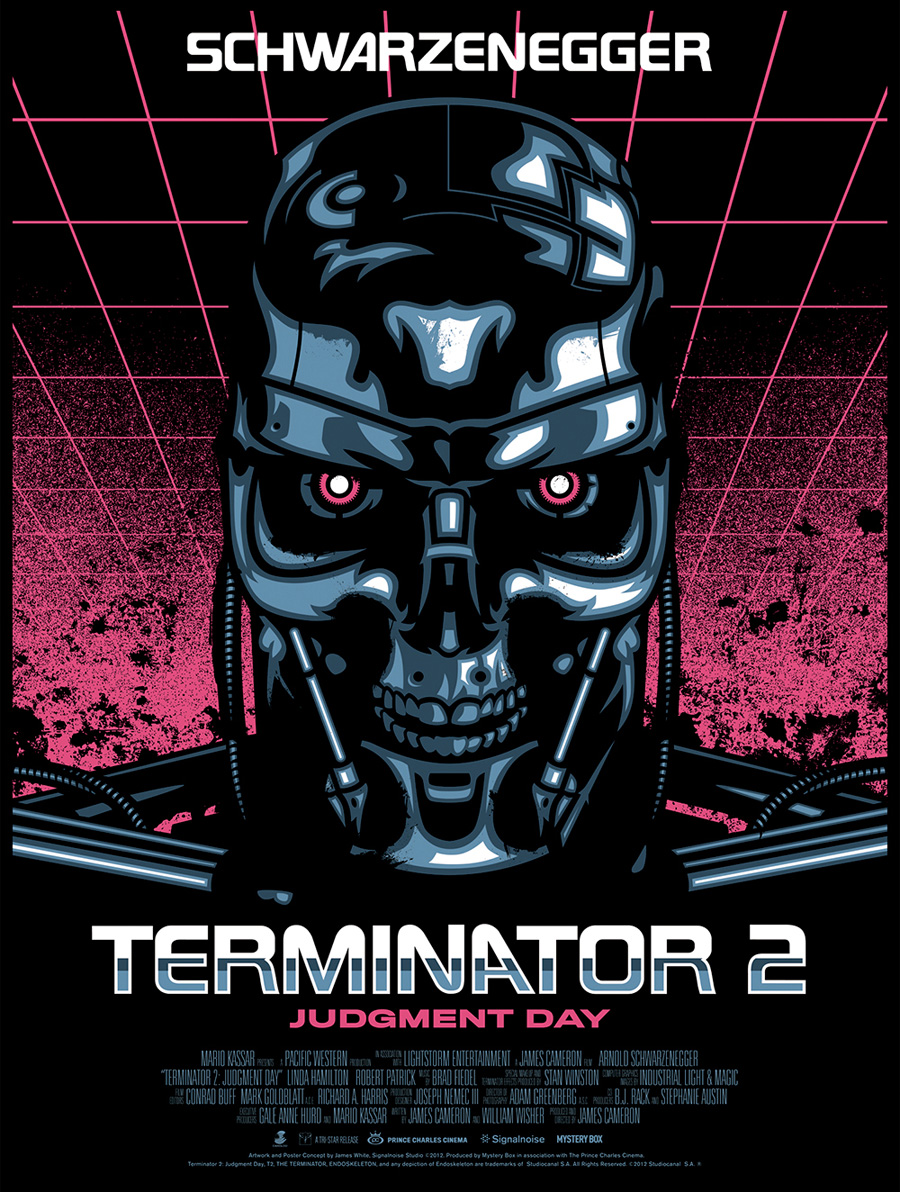




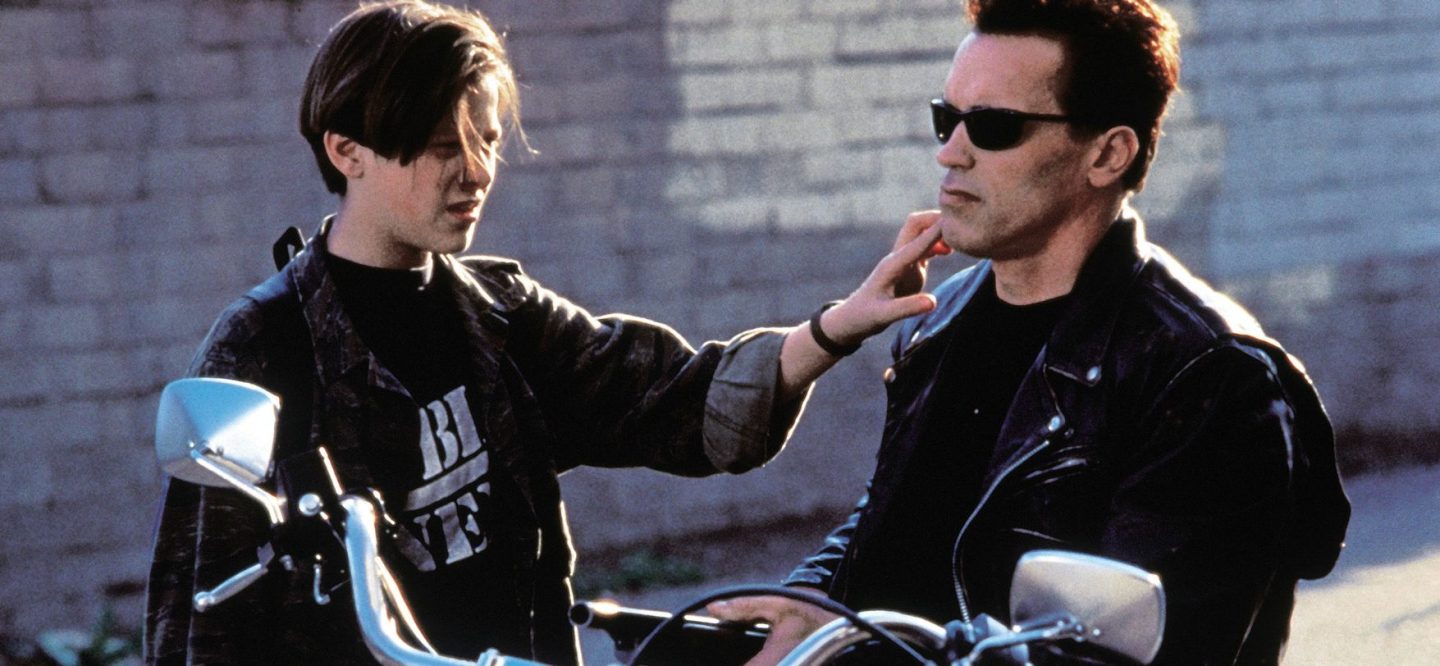











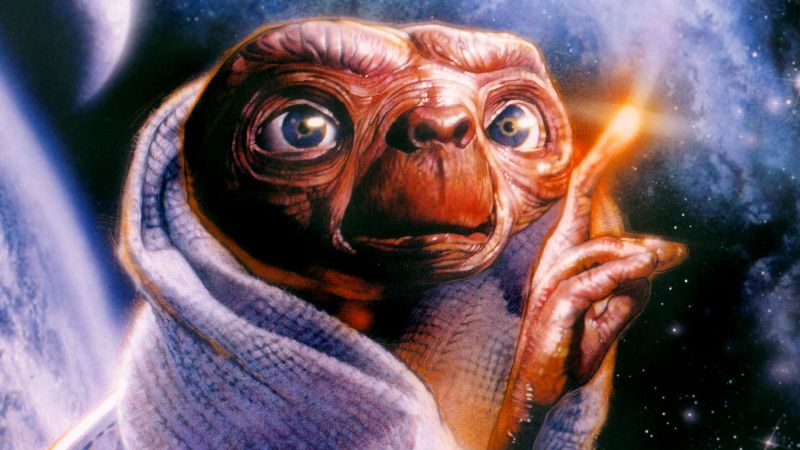
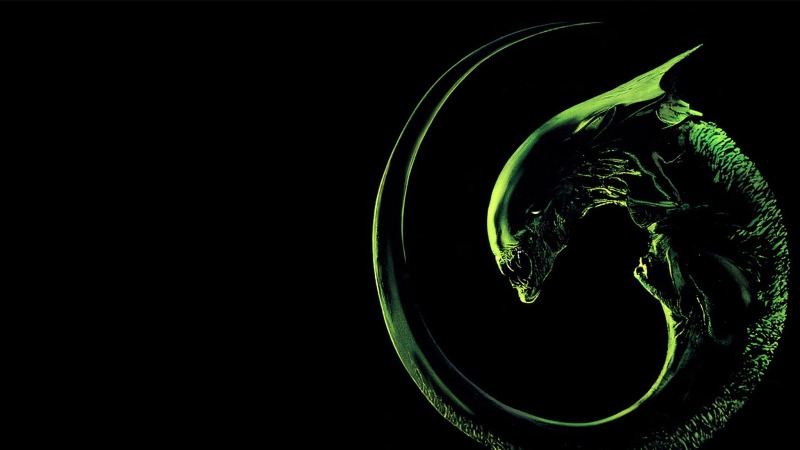
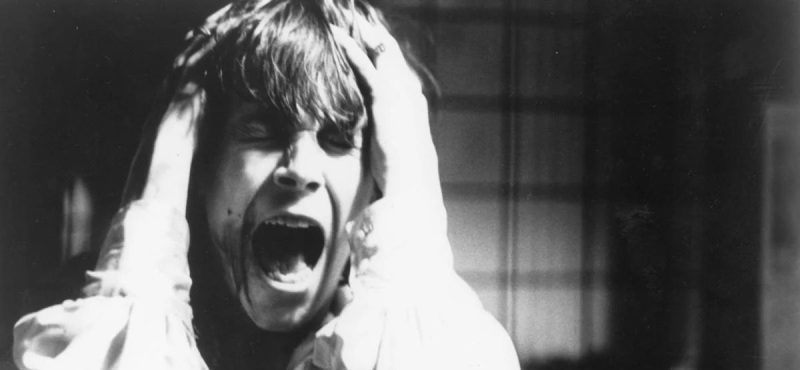



















I think Terminator 2 is one of the best sequels ever. It just gets everything right, build on the premise of the original film, and features superb action sequences. The characters are the heart of the film though. I still prefer the original edit of T2 to the special edition, which I think slows the pace of the movie too much. T2 also had mind-blowing special effects, and they’ve stood the test of time as well. As sequels go, I can only think of a handful of movies that have had sequels as good as T2.
LikeLike
Hi Paul,
There’s no question that T2 is one of the finest sequels ever made. The screenplay is just so clever and the action breathtaking. I think it was the first CGI movie to make people say, “Wow! This is the real deal!”
I agree about the theatrical release, which is why I make the distinction in the article. The TR has exquisite pacing, absolutely breathless, which for me is the movie’s main strength and the reason why it has held up so well. The Special Edition slowed it down to a crawl at times. It’s just not the same. Goes to show the value of editing.
LikeLiked by 1 person
I feel very strongly that this is one of the best sequels ever. I mean, there are so many iconic moments (that motorcycle/truck chase was even used in the video Game “Grand theft Auto: San Andreas”), the dialogue crackles, the situation is dire (I thought Joe Morton was great in his small role), and it’s an easy film to pay attention to. I never viewed The special Edition, so it doesn’t improve on the original cut. I see that as a good thing, since there’s nothing I’d improve on (one final remark: I’m okay, and barely, with the third film in “The Terminator” series, but that’s where my cutoff is. I know nothing about Patrick Bateman fighting the machines or anything in the franchise of recent vintage).
LikeLike
It’s in San Andreas? I obviously didn’t get that far. I lost interest once the cat and mouse element was ditched. For me, that’s what makes the first two movies so great. Not interested in an expansive, CGI-laden universe. I saw the first of the new Terminator sequels and it wasn’t like watching The Terminator at all. It definitely wasn’t for me.
LikeLiked by 1 person
Yeah, the motorcycle/truck scene is in the San Andreas mission ‘Just business’ with Big Smoke (it’s the second half of that particular mission and a rail shooter section; a bunch of guys get terminated).
Yeah, 17 minutes doesn’t sound like a lot, but it sound like in this case that the numbers add up in T2.
LikeLike
And yeah, The Special Edition slows things down to a crawl. I suggest you watch it just to see how detrimental it is to the film. If nothing else, it’ll make you appreciate the Theatrical Cut more. Pace was its greatest strength and the extra scenes just kill it. It’s only 17 minutes but it’s like a different film.
LikeLiked by 1 person